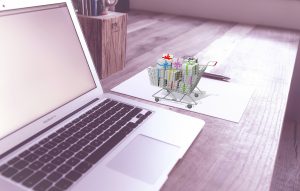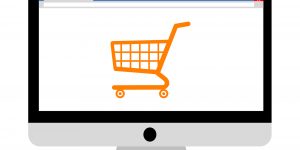- Logistics is the bottleneck in e-commerce: IoT accelerates processes
- Forecasting arrival times and balancing fluctuations in demand
- Logistics experts expect autonomous deliveries soon
Eight out of ten online shoppers (85 percent) would like to see a delivery time before the last click when making a purchase. If this information is missing, one in three (32 percent) discontinue their purchase. A trend that is actually intensifying for frequent customers: 44 percent will not snap up an offer on the web if it remains unclear when products will arrive. The figures, which the market and opinion research institute Civey determined in a survey representative of the German population for eco – Association of the Internet Industry show: Logistics is the bottleneck in e-commerce. “In order to determine delivery times precisely, companies need full transparency over their supply chains”, says Dr. Bettina Horster, board member at VIVAI Software and director of the Competence Groupg IoT in the eco association. The Internet of Things (IoT) offers a solution. This is because freight forwarders and carriers digitalize and network their supply chains via IoT, goods movements can be monitored and delivery times can be forecast.
Whether on land, on water or in the air, IoT can be used to map complex transport networks and track them in real time. However, as of today, the logistics field has not sufficiently linked its systems and applications with each other. Companies share hardly any data with partners in the supply chain, rely on silos, and waste potential. “Only when goods and information flow simultaneously and comprehensively throughout the entire value-added network will all logistics partners benefit”, says Horster. For example, IoT data also point the way to compensating for fluctuations in demand, which can otherwise build up to a dangerously high level along the supply chain from the buyer to the producer.
IoT makes logistics processes transparent
“With IoT solutions, goods movements can be tracked and processes intelligently automated – around the world, around the clock”, confirms Thorsten Stuke, Managing Director at m2m-Tailors and Mobility expert at eco. The resulting Logistics 4.0 is smarter, more sustainable, and more social. It saves delivery costs, accelerates transport, and even makes raw materials traceable from the customer to the producer. This can be seen in automobile production, for example. Manufacturers no longer keep cost-intensive components in stock, but can have them delivered as needed. In agriculture, IoT creates transparent and traceable digital agricultural supply chains – from farmers to retailers. This allows digital monitoring of compliance with international standards with regard to human rights, ecology and fair pay. If required, artificial intelligence also supports planning across different modes of transport and optimises the route in terms of carbon dioxide emissions.
Experts expect autonomPrecise Delivery Times Decisive for the Final Click When PurchasingPrecise Delivery Times Decisive for the Final Click When Purchasingous delivery processes
It is possible that within 10 years, delivery processes will even become completely autonomous due to progressive digitalisation – deliveries would then be sent to consumers without any human involvement. The majority (56 percent) of the respondents at an expert meeting at the eco Association – the IoT Business Trends on the subject of multimodal logistics – believe this is likely. However, a broad majority of 71 percent of the experts are also convinced that, even in 10 years, there will still be real jobs in the logistics and supply chain.
The opinion research company Civey surveyed 2,500 people between 30.06 and 06.07.2020 on behalf of eco. The results are representative for people who order online. The statistical error of the overall results is 3.5 percent.




